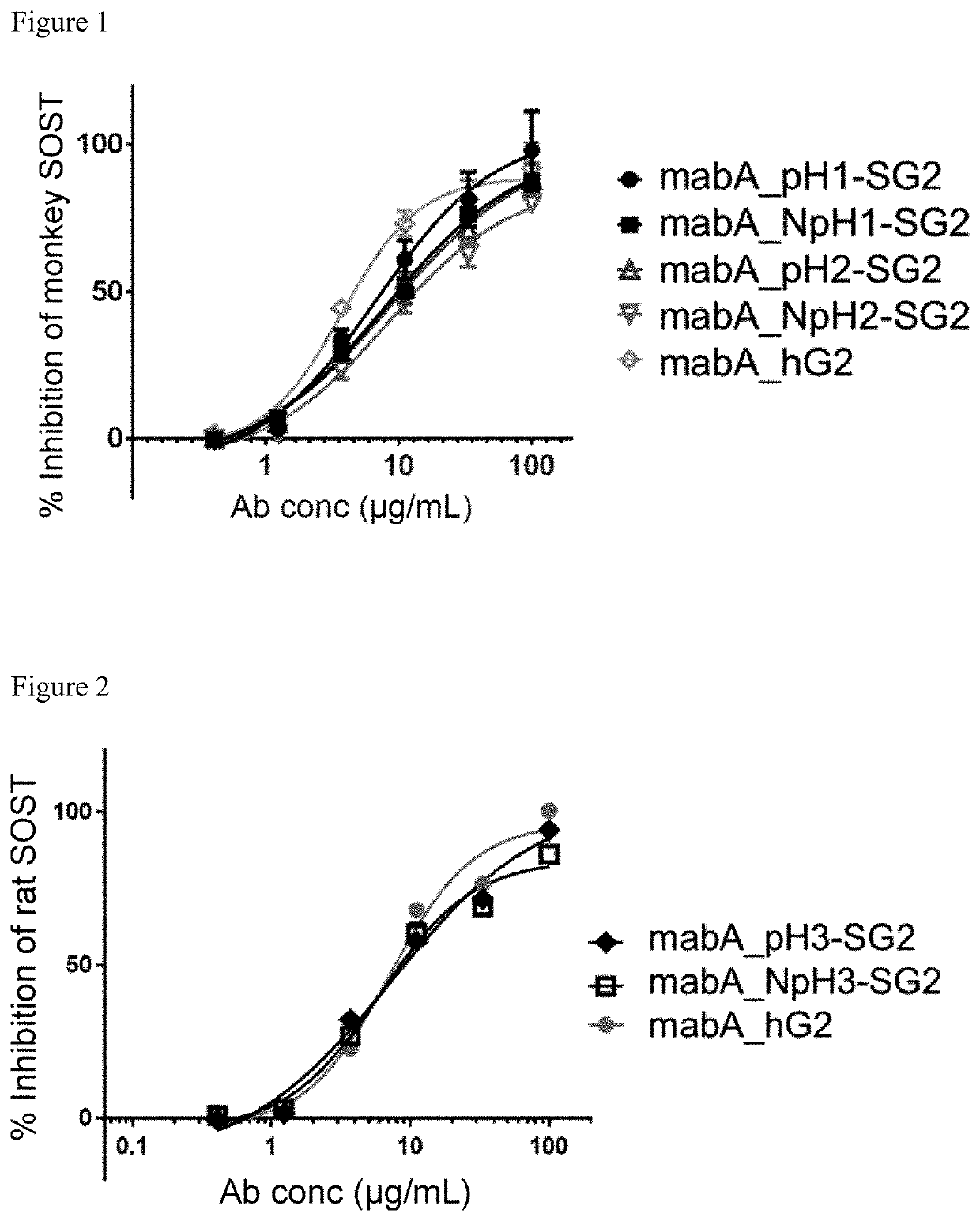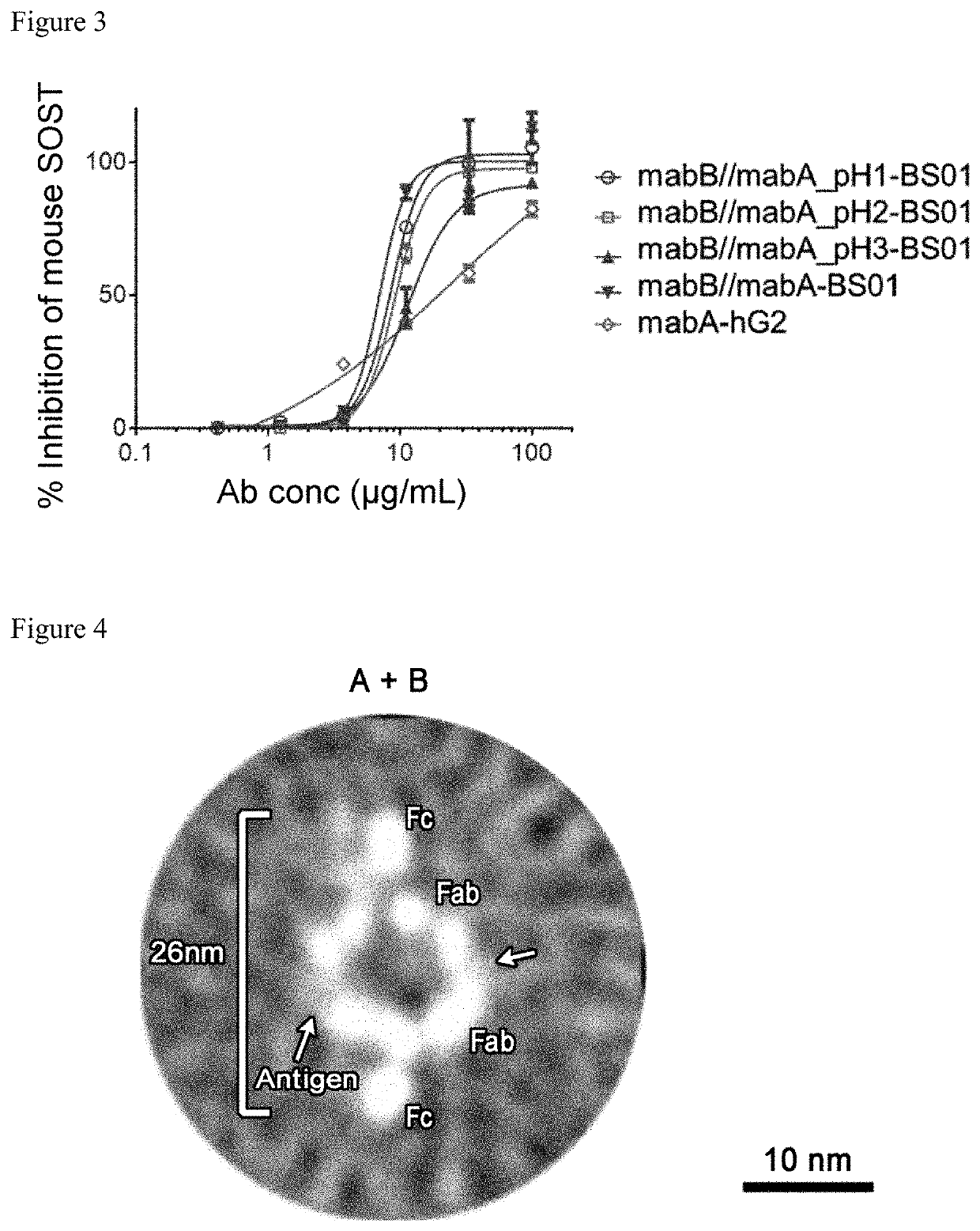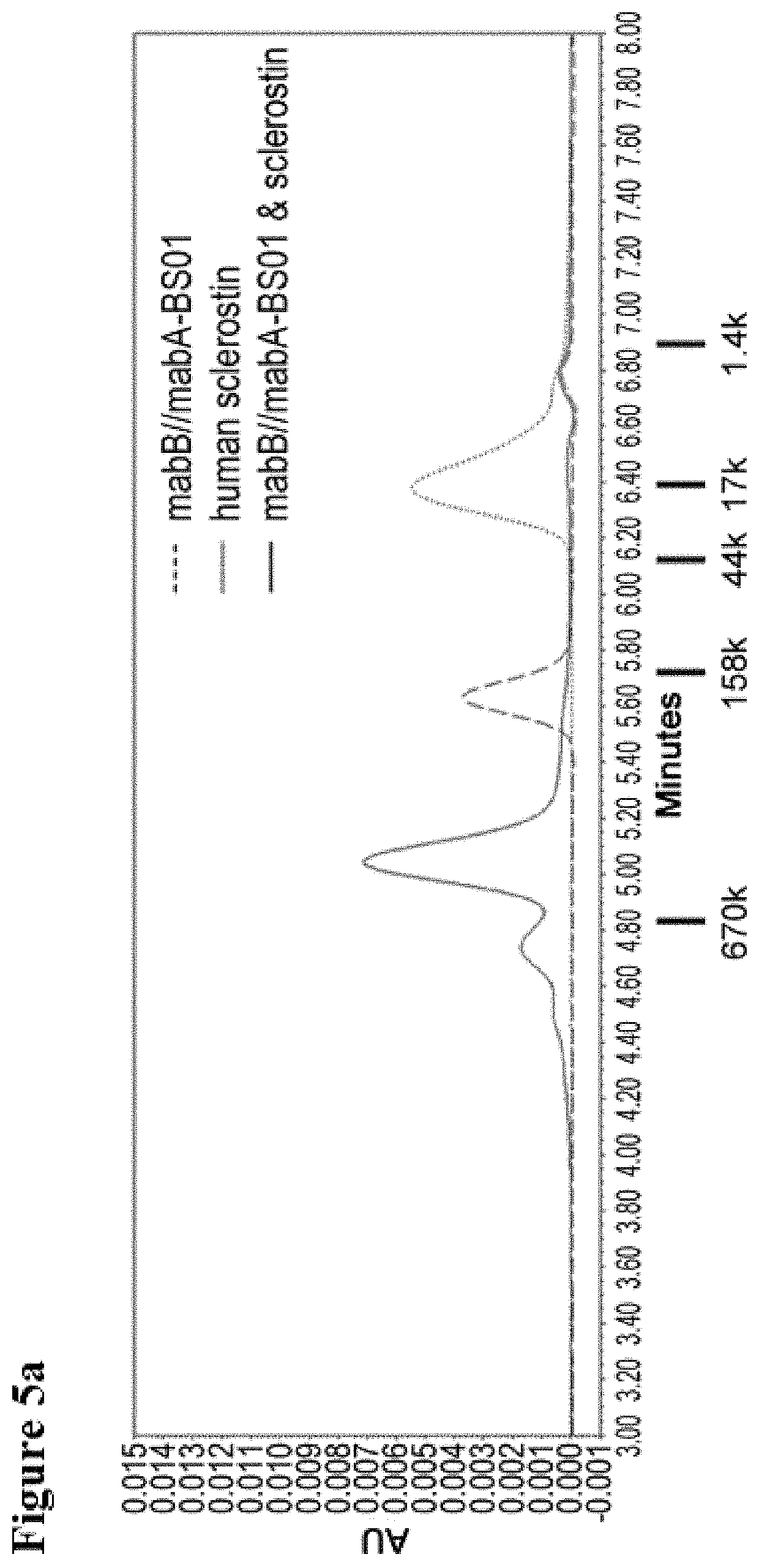Anti-sclerostin antibodies and methods of use
a technology of sclerostin and antibodies, applied in the field of antisclerostin antibodies, can solve the problems of increasing the fragility and susceptibility of skeletal bone fracture, significant medical problems, and high cost of patients, and achieves the effect of increasing bone mineral density and increasing bone mineral density
- Summary
- Abstract
- Description
- Claims
- Application Information
AI Technical Summary
Benefits of technology
Problems solved by technology
Method used
Image
Examples
example 1
Expression and Purification of Recombinant Human, Cynomolgus Monkey, Rat, and Mouse Sclerostin
[0393]Recombinant human sclerostin (NCBI GenBank accession number: NP 079513, SEQ ID NO: 1) was expressed transiently using FreeStyle293-F cell line (Thermo Fisher, Carlsbad, Calif., USA). Conditioned media expressing human sclerostin was applied to a Heparin sepharose HP column (GE healthcare, Uppsala, Sweden), followed by elution with NaCl gradient. Fractions containing human sclerostin were pooled, and salt concentration was adjusted to 100 mM NaCl. The resulting sample was applied to a SP-sepharose HP cation exchange column (GE healthcare, Uppsala, Sweden) and eluted with a NaCl gradient. Fractions containing human sclerostin were pooled and subjected to a Superdex 200 or Superdex 75 gel filtration column (GE healthcare, Uppsala, Sweden). Fractions containing human sclerostin were pooled and stored at −150 degrees C.
[0394]Expression and purification of recombinant cynomolgus monkey scle...
example 2
Generation of pH-Dependent Anti-Sclerostin Antibodies, and Biparatopic Antibodies
[0395]Anti-sclerostin antibodies mabA (VH; SEQ ID NO: 7 and VL; SEQ ID NO: 15) and mabB (VH; SEQ ID NO: 23 and VL; SEQ ID NO: 27), both of which are known in the art, were modified in the amino acid sequences so that the pH-dependent antigen binding activities were given to the antibodies. Antibody variants of mabA and mabB were generated as follows: A vast number of mutations and their combinations were examined and some mutations were introduced to the variable region of mabA or mabB to improve its antigen-binding properties, and the optimized variable regions mabA_pH1 (VH; SEQ ID NO: 8 and VL; SEQ ID NO: 16), mabA_pH2 (VH; SEQ ID NO: 9 and VL; SEQ ID NO: 17), mabA_pH3 (VH; SEQ ID NO: 10 and VL; SEQ ID NO: 18), mabA_pH4 (VH; SEQ ID NO: 11 and VL; SEQ ID NO: 19), mabA_NpH1 (VH; SEQ ID NO: 12 and VL; SEQ ID NO: 20), mabA_NpH2 (VH; SEQ ID NO: 13 and VL; SEQ ID NO: 21), mabA_NpH3 (VH; SEQ ID NO: 14 and VL...
example 3
Evaluation of pH-Dependency in Biacore
[0399]The affinity of anti-sclerostin variants binding to human, cynomolgus monkey (cyno), rat, or mouse sclerostin at pH 7.4 and pH 5.8 were determined at 37 degrees C. using Biacore T200 instrument (GE Healthcare). Anti-human Fc (GE Healthcare) was immobilized onto all flow cells of a CM4 sensor chip using amine coupling kit (GE Healthcare). All antibodies and analytes were prepared in ACES pH7.4 or pH 5.8 buffer containing 20 mM ACES, 150 mM NaCl, 1.2 mM CaCl2, 0.05% Tween 20, 0.005% NaN3. Each antibody was captured onto the sensor surface by anti-human Fc. Human, cyno, rat, or mouse sclerostin was injected at 1.25 nM and 5 nM or 0.5 nM and 2 nM for pH7.4 assay condition, and 5 nM or 2 nM for pH5.8 assay condition. Sensor surface was regenerated each cycle with 3M MgCl2. Binding affinity were determined by processing and fitting the data to 1:1 binding model using Biacore T200 Evaluation software, version 2.0 (GE Healthcare).
[0400]The pH depe...
PUM
| Property | Measurement | Unit |
|---|---|---|
| Length | aaaaa | aaaaa |
| Length | aaaaa | aaaaa |
| Length | aaaaa | aaaaa |
Abstract
Description
Claims
Application Information
 Login to view more
Login to view more - R&D Engineer
- R&D Manager
- IP Professional
- Industry Leading Data Capabilities
- Powerful AI technology
- Patent DNA Extraction
Browse by: Latest US Patents, China's latest patents, Technical Efficacy Thesaurus, Application Domain, Technology Topic.
© 2024 PatSnap. All rights reserved.Legal|Privacy policy|Modern Slavery Act Transparency Statement|Sitemap



